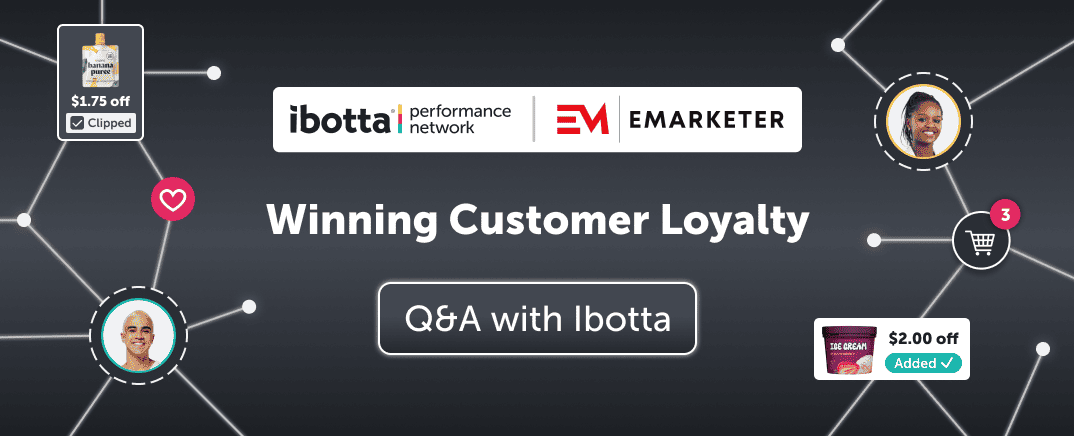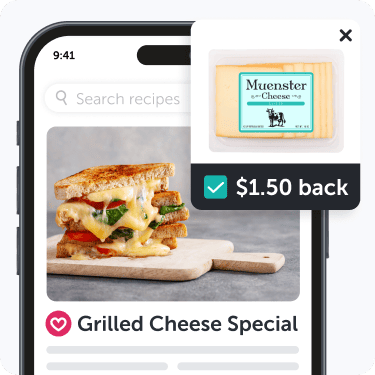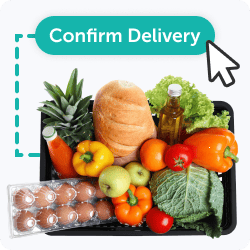
April 1, 2025
In today’s price-sensitive grocery landscape, brand loyalty is a fragile commodity. Economic pressures are forcing consumers to adjust how they shop for groceries which poses a significant challenge to how CPG brands seek to retain their customer base.
Our own survey results from January 2025 uncovered that consumers are adopting various financial coping mechanisms due to higher grocery prices. Grocery shoppers are primarily choosing to use cash back savings, cut back on impulse purchases, and focus on purchasing necessities only. These savings strategies put brand loyalty at risk.
How consumers are responding to higher grocery prices

Survey results from January 2025
Recently, Ibotta’s Senior Vice President of Client Partnerships Anna Schroeder sat down with EMARKETER to share her advice on how to win grocery shoppers’ loyalty in a price-sensitive market.
"As [grocery] shoppers become more intentional about deal-seeking and selective with their purchase decisions, brands must meet them at decision-making touchpoints," said Anna Rabaut Schroeder.
Tapping into multiple communication channels and promotional methods is key to influencing purchase behavior when consumers feel economic pressures. Read more insights from Schroeder in the full Q&A session.

Q: Will shoppers continue to worry about rising grocery prices, or are concerns leveling off?
A: Some shoppers will always be concerned with grocery prices, and it’s certainly a consistent trend we’ve seen over the past few years. According to Ibotta’s “2024 State of Spend” report, shoppers reported spending an additional $302 on food and beverage essentials last year, with 70% attributing it to price increases.
Marketers must recognize that every shopper has their own threshold for price changes. The opportunity lies in understanding these preferences and behaviors, offering tailored incentives that help meet the customer where they are and delivering this personalization at scale.
Q: What behaviors is Ibotta seeing from value-focused shoppers looking to save?
A: With many consumers focused on saving money, we’ve seen a shift toward private label products. Shoppers are turning to store brands to stretch their budgets without sacrificing entirely. Three-quarters of consumers in our [State of Spend] survey would switch to a lower-priced alternative, so brands offering personalized promotions are better positioned to capture these budget-conscious shoppers.
Over the past three years, private label growth has steadily increased across all categories, with the biggest shifts between 2021 and 2022, when inflation was at its peak. As long as consumers feel the price pinch, we can expect this trend to continue.
Q: How are mobile devices and apps like Ibotta changing in-store shopping?
A: We live in an increasingly connected, tech-forward world where we use multiple screens and devices everywhere we go—and the grocery store is no exception. More people are incorporating digital tools into their in-store shopping experience. Ibotta found that digital promotions lead spending growth across all tactics, with a 13% year-over-year increase.
As shoppers become more intentional about deal-seeking and selective with their purchase decisions, brands must meet them at decision-making touchpoints and provide the right offer to the right shopper at the right time.
Q: How can retailers build customer loyalty in such a competitive, high-frequency grocery market?
A: To build loyalty in a competitive market, it’s all about understanding customer motives and behavior—what they’re buying, where, how often, etc. With that insight, brands can engage customers with personalized incentives that compel action. With advancements in machine learning, it’s possible to do this at scale, making it easier than ever to tailor the shopping experience to each customer’s preference.
Q: With most grocery orders still happening directly through retailers’ sites, how can delivery intermediaries like DoorDash and Instacart keep growing?
A: In addition to expanding their D2C and white-label delivery offerings, companies like Instacart and DoorDash are leaning into retail media to accelerate growth. By populating their platforms with a high-quality selection of items and personalized content, they connect advertisers with consumers at the point of purchase—helping to cut through the noise and engage shoppers. Pairing quality offer content with a clear call to action drives sales for brands and delivery platforms.
3 brand loyalty strategies to combat price sensitivity
By implementing these strategies, businesses can build strong brand loyalty and mitigate the impact of price sensitivity, ensuring continued customer engagement and sustainable growth.
The Q&A originally appeared in the EMARKETER report “US Digital Grocery Forecast.” Click here to download the full report.


